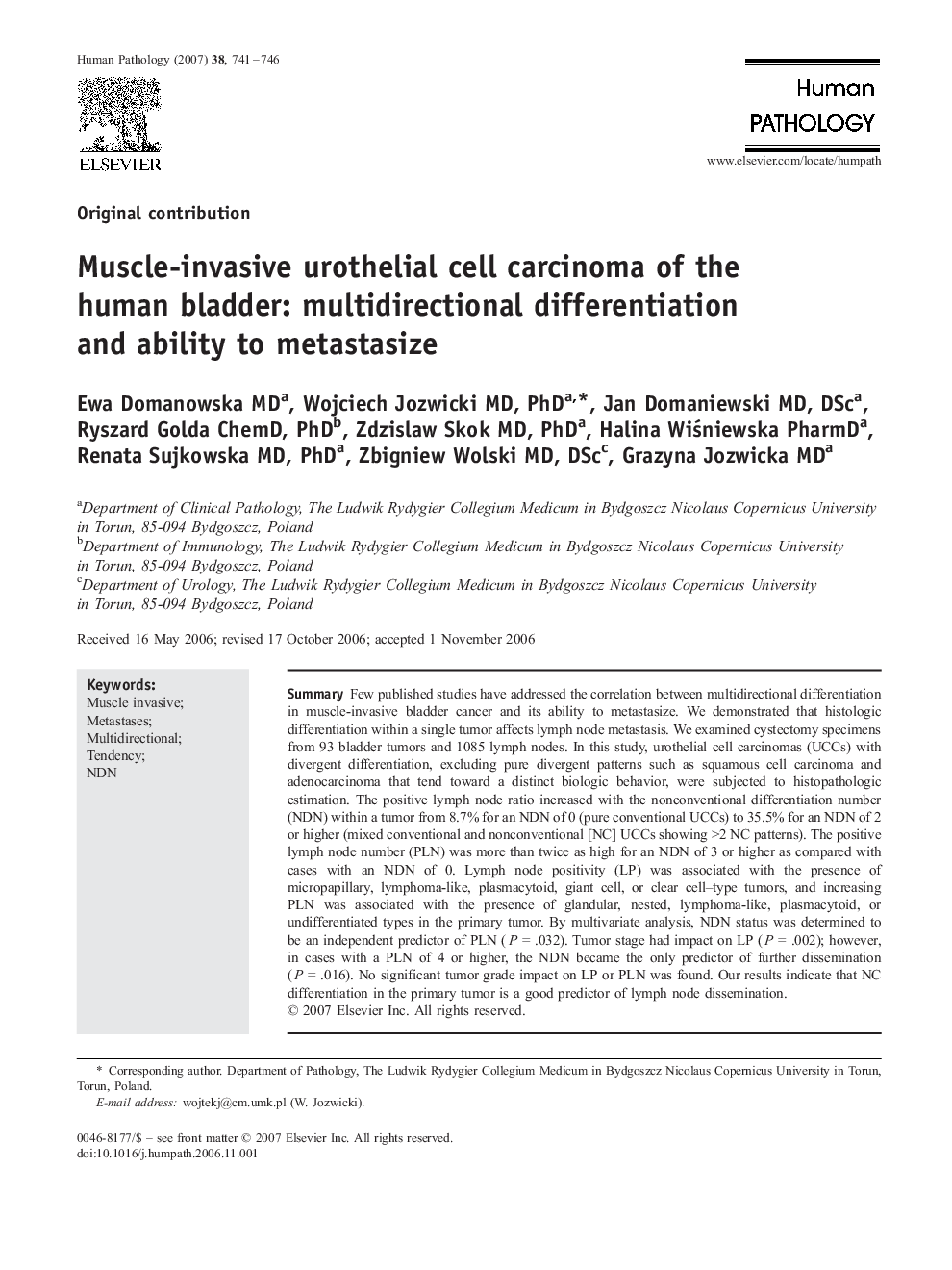| Article ID | Journal | Published Year | Pages | File Type |
|---|---|---|---|---|
| 4135274 | Human Pathology | 2007 | 6 Pages |
SummaryFew published studies have addressed the correlation between multidirectional differentiation in muscle-invasive bladder cancer and its ability to metastasize. We demonstrated that histologic differentiation within a single tumor affects lymph node metastasis. We examined cystectomy specimens from 93 bladder tumors and 1085 lymph nodes. In this study, urothelial cell carcinomas (UCCs) with divergent differentiation, excluding pure divergent patterns such as squamous cell carcinoma and adenocarcinoma that tend toward a distinct biologic behavior, were subjected to histopathologic estimation. The positive lymph node ratio increased with the nonconventional differentiation number (NDN) within a tumor from 8.7% for an NDN of 0 (pure conventional UCCs) to 35.5% for an NDN of 2 or higher (mixed conventional and nonconventional [NC] UCCs showing >2 NC patterns). The positive lymph node number (PLN) was more than twice as high for an NDN of 3 or higher as compared with cases with an NDN of 0. Lymph node positivity (LP) was associated with the presence of micropapillary, lymphoma-like, plasmacytoid, giant cell, or clear cell–type tumors, and increasing PLN was associated with the presence of glandular, nested, lymphoma-like, plasmacytoid, or undifferentiated types in the primary tumor. By multivariate analysis, NDN status was determined to be an independent predictor of PLN (P = .032). Tumor stage had impact on LP (P = .002); however, in cases with a PLN of 4 or higher, the NDN became the only predictor of further dissemination (P = .016). No significant tumor grade impact on LP or PLN was found. Our results indicate that NC differentiation in the primary tumor is a good predictor of lymph node dissemination.
